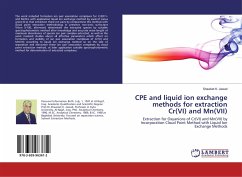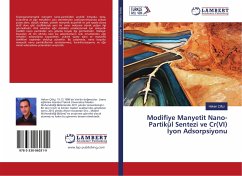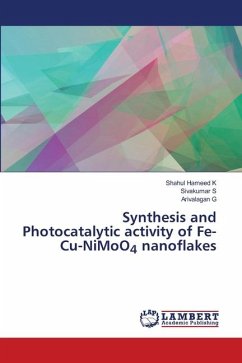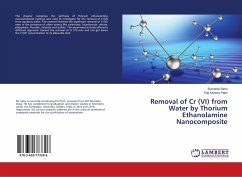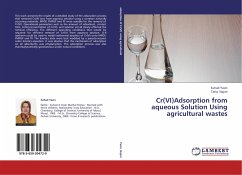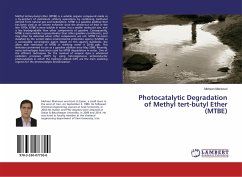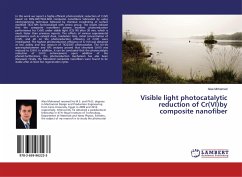
Visible light photocatalytic reduction of Cr(VI)by composite nanofiber
Versandkostenfrei!
Versandfertig in 6-10 Tagen
24,99 €
inkl. MwSt.

PAYBACK Punkte
12 °P sammeln!
In this work we report a highly efficient photocatalytic reduction of Cr(VI) based on PAN-CNT/TiO2-NH2 composite nanofibers fabricated by using electrospinning technique followed by chemical crosslinking of surface modified TiO2 NPs functionalized with amino group. The results indicate that the composite nanofibers possess excellent photoreduction performance for Cr(VI) under visible light (125 W) after 30 min, which is much faster than previous reports. The effects of various experimental parameters such as catalyst dose, irradiation time, initial concentration of Cr(VI), and pH on the photor...
In this work we report a highly efficient photocatalytic reduction of Cr(VI) based on PAN-CNT/TiO2-NH2 composite nanofibers fabricated by using electrospinning technique followed by chemical crosslinking of surface modified TiO2 NPs functionalized with amino group. The results indicate that the composite nanofibers possess excellent photoreduction performance for Cr(VI) under visible light (125 W) after 30 min, which is much faster than previous reports. The effects of various experimental parameters such as catalyst dose, irradiation time, initial concentration of Cr(VI), and pH on the photoreduction efficiency of Cr(VI) were investigated. The highest photoreduction efficiency of Cr (VI) was obtained at low acidity and low amount of TiO2/CNT photocatalyst. The UV-Vis spectrophotometer and XPS analyses proved that chromate Cr(VI) was reduced to Cr(III). In addition, it can be concluded that the photocatalytic reduction of Cr(VI) enhancement upon addition of the phenol.Furthermore, the photoreduction mechanism has also been discussed. Finally, the fabricated composite nanofibers were found to be stable after at least five regeneration cycles



